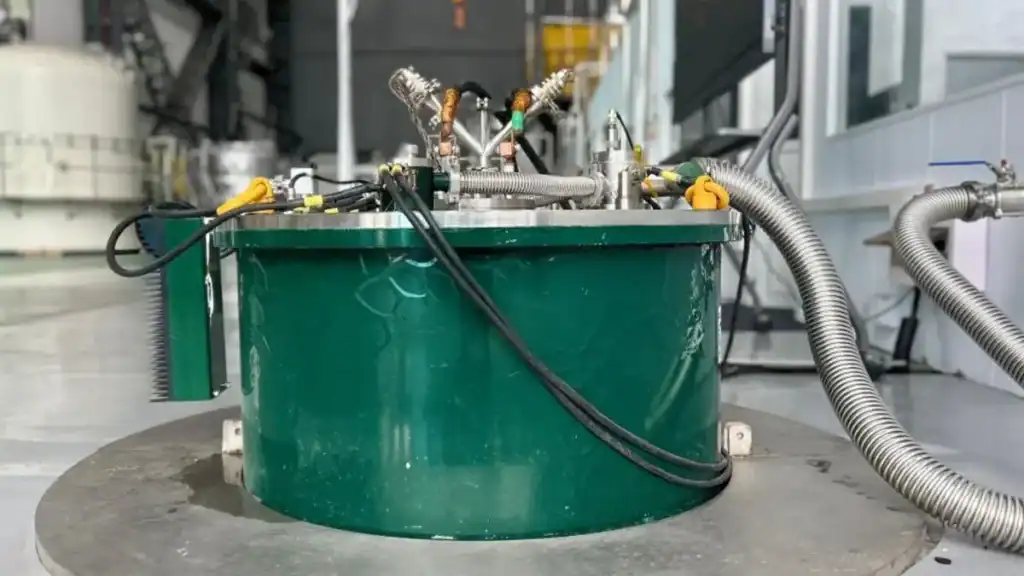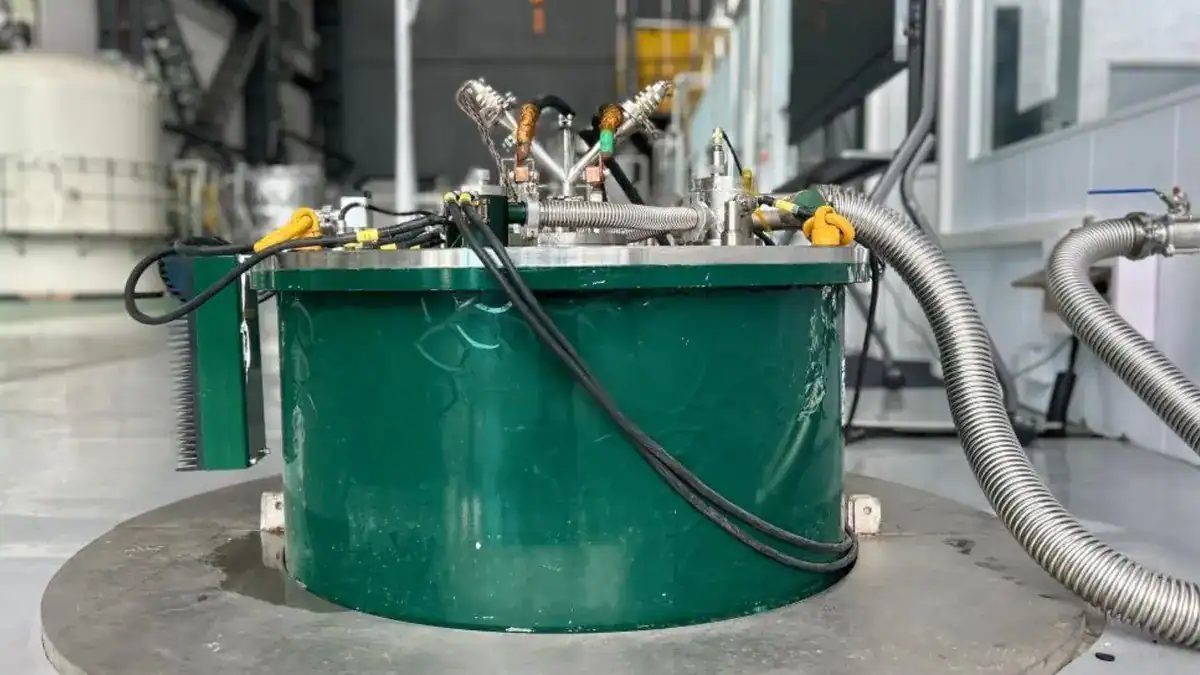 Chinese scientists set world record with magnetic field 700,000 times Earth’s. Credit: ASIPP
Chinese scientists set world record with magnetic field 700,000 times Earth’s. Credit: ASIPP
In Hefei, China, physicists switched on a new machine that pushed magnetic fields to record strength. As the device powered up, it held a magnetic field more than 700,000 times stronger than Earth’s natural field.
The strength: 35.1 tesla. It’s the strongest magnetic field ever produced by a superconducting magnet. For perspective, Earth’s magnetic field is about 0.00005 tesla. It’s sometimes measured in a different unit of measure called a “gauss”. The Earth’s magnetic field is 0.5 gauss, while the new Chinese magnet reached 351,000 gauss, zooming past the previous world record of 323,500 gauss. .
“This validated the reliability of the technical solution and provided an important platform for conducting various sample experiments under 35.1 tesla conditions,” said China’s Institute of Plasma Physics at the Chinese Academy of Sciences (CAS), in a statement.
A Magnet Sandwich Built for the Future
Behind the breakthrough is a deceptively simple-sounding idea: a magnet that is both hot and cold at once. The team built it using high-temperature superconducting insert-coil technology nestled neatly within more traditional low-temperature superconducting coils. These coaxial layers allow the device to stay stable even under extreme magnetic stress.
Simply put, the magnet works like a layered sandwich. There’s an inner coil that tolerates higher temperatures and sits inside outer coils that stay extremely cold. together they create a stronger, more stable magnetic field.
Liu Fang, a researcher at the Institute, explained the design to CGTN: it “adopts high-temperature superconducting insert-coil technology, coaxially nested with low-temperature superconducting magnets.”
But building such a hybrid was anything but easy. The team had to overcome a string of challenges, including “stress concentration, shielding current effects and multi-field coupling effects under low-temperature, high-field conditions,” according to a report from Xinhua News. Each of these effects could cause the magnet to fail. But by carefully tuning the materials and design, the engineers created a structure that didn’t just survive the intense forces—it thrived.
The result is a stable magnetic field of unprecedented strength. The system ran smoothly for half an hour and then was safely powered down—what scientists call demagnetized—without losing any of its precision or integrity.
The Reach of Superconducting Magnets
Superconducting magnets aren’t new. They’re already hard at work in MRI scanners, particle accelerators, and magnetic levitation (maglev) trains. But none of those systems have ever needed to handle fields like this.
Where the new record truly shines is in nuclear fusion, the holy grail of clean energy. To fuse two light atoms into a heavier one and release energy, you need to contain a plasma at temperatures hotter than the Sun. The only way to do that on Earth is by using magnetic cages made of intense, stable magnetic fields. So this record isn’t just a random achievement, it’s something that can be used in fusion generators.
ASIPP, the Institute that led the project, is also China’s main participant in ITER, the International Thermonuclear Experimental Reactor. This massive fusion experiment, located in France and funded by dozens of countries, aims to prove that fusion can produce more energy than it consumes.
While the Chinese team hasn’t said whether this exact magnet will go into ITER, it’s clear the breakthrough is part of a broader push. China is supplying ITER with superconductors, correction coils and magnet feeders. The new technology, which is entirely developed and manufactured in China, will likely influence future components for fusion reactors—not just in ITER, but in China’s own ambitious fusion program.
A Foundation for Future Tech
The implications even extend beyond fusion.
The new magnet could accelerate advances in space propulsion systems, nuclear magnetic resonance spectroscopy, superconducting induction heating, high-speed maglev trains, and even energy transmission networks with nearly zero loss.
In short, this is a technological foundation—a platform for the next generation of tools and machines that could redefine how we diagnose disease, explore the stars, and power our homes.
A few tenths of a tesla can mean the difference between melting metals or keeping them frozen in magnetic suspension. By leaping ahead by several whole tesla, Chinese scientists have carved out new territory in the physics of the extreme.

